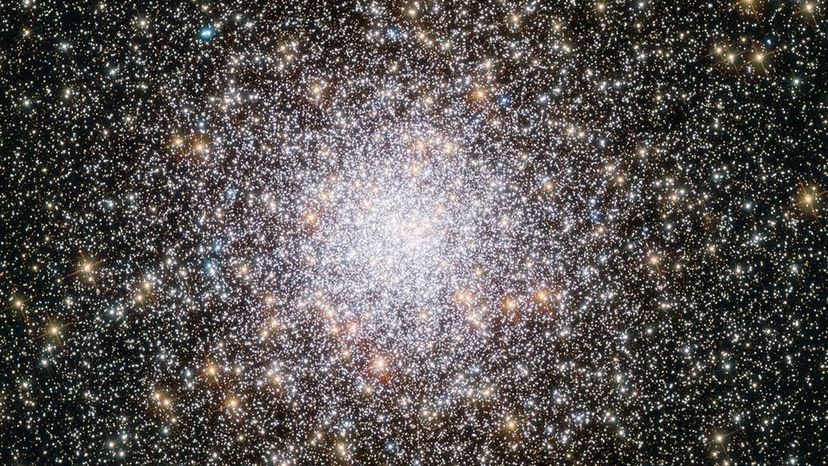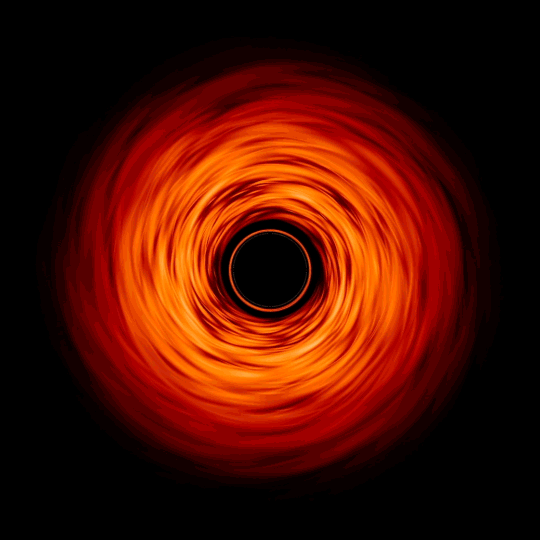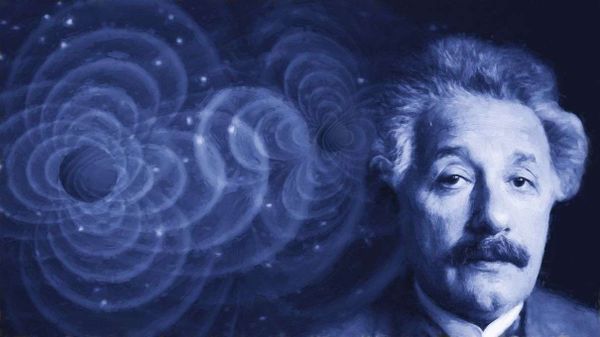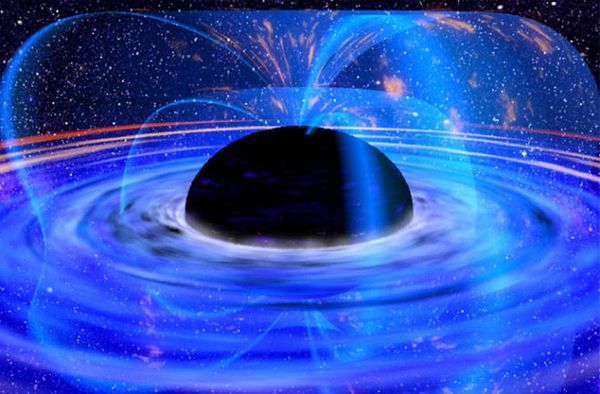
Scientists are getting familiar with black holes bumping in the night. Back in 2015, the Laser Interferometer Gravitational-wave Observatory (or LIGO) made history by detecting the rumbles in spacetime caused by two black holes colliding in a galaxy far, far away. This first detection confirmed the existence of binary stellar-mass black holes, or those born from the spectacular supernova deaths of massive stars. Since then, we've detected several other mergers (plus a bonus neutron star merger!).
Now, in research published on April 10, 2018, in the journal Physical Review Letters, researchers suggest that black holes likely merge repeatedly to produce black holes that are too massive to be produced by just one star. And globular star clusters could be the perfect neighborhood for such objects to form and merge — over and over again.
Advertisement
"We think these clusters formed with hundreds to thousands of black holes that rapidly sank down in the center," said Carl Rodriguez, of MIT and the Kavli Institute for Astrophysics and Space Research, in a statement. "These kinds of clusters are essentially factories for black hole binaries, where you've got so many black holes hanging out in a small region of space that two black holes could merge and produce a more massive black hole. Then that new black hole can find another companion and merge again."
LIGO hasn't yet picked up on one of these "second-generation mergers." All the mergers detected to date have involved stellar-mass black holes (those likely formed by single massive stars). Should the gravitational waves from a merger event involving a black hole of 50 times the mass of our sun be detected in the future, however, that would be strong evidence to suggest the repeated merging of black holes. And that would be exciting.
"If we wait long enough, then eventually LIGO will see something that could only have come from these star clusters, because it would be bigger than anything you could get from a single star," added Rodriguez.
Most galaxies are home to globular clusters, with more clusters found in bigger galaxies. Therefore, massive elliptical galaxies may host tens of thousands of clusters, whereas the Milky Way has roughly 200, with the nearest located 7,000 light-years from Earth. These clusters contain ancient stars all crammed into a small volume, so the conditions are ripe for any black holes inside these clusters to fall to the center and get cozy with any other black holes that might be lurking.

Should two black holes drift close to one another after falling from different parts of a cluster, relativity calculations suggest that they will emit gravitational waves, thereby sapping energy from their motion through the cluster. This would cause the black holes to slow and start to spiral in, eventually settling into a binary orbit around one another. Then their fates are sealed. Both black holes will continue to emit gravitational waves, causing their orbit to shrink until the pair collide, merge and erupt with a powerful gravitational wave blast that would travel away at the speed of light. This newly merged black hole would then hang out inside the cluster waiting for another black hole to drift by and begin the binary dance once more.
However, when Rodriguez's team ran the simulations, they assumed the merging black holes were rapidly spinning and the results were, well, rather ballistic.
"If the two black holes are spinning when they merge, the black hole they create will emit gravitational waves in a single preferred direction, like a rocket, creating a new black hole that can shoot out as fast as 5,000 kilometers per second — so, insanely fast," said Rodriguez. "It only takes a kick of maybe a few tens to a hundred kilometers per second to escape one of these clusters."
By this logic, if the merged black holes are being booted out of the clusters, they can't merge again. But, after analyzing the typical spin of the black holes detected by LIGO, the team found that black hole spin is a lot lower, meaning there's less chance of clusters letting loose their newly merged black holes. After making this correction, the researchers found that nearly 20 percent of black hole binaries would have at least one black hole that was formed in a previous merger. And by their reckoning, second-generation black holes should have a telltale mass range of between 50 and 130 solar masses. There's no other way to produce black holes of this mass if it wasn't for mergers.
So, for now it's over to the world's gravitational wave detectors to find a signal that was produced by a second-generation black hole.
Advertisement

